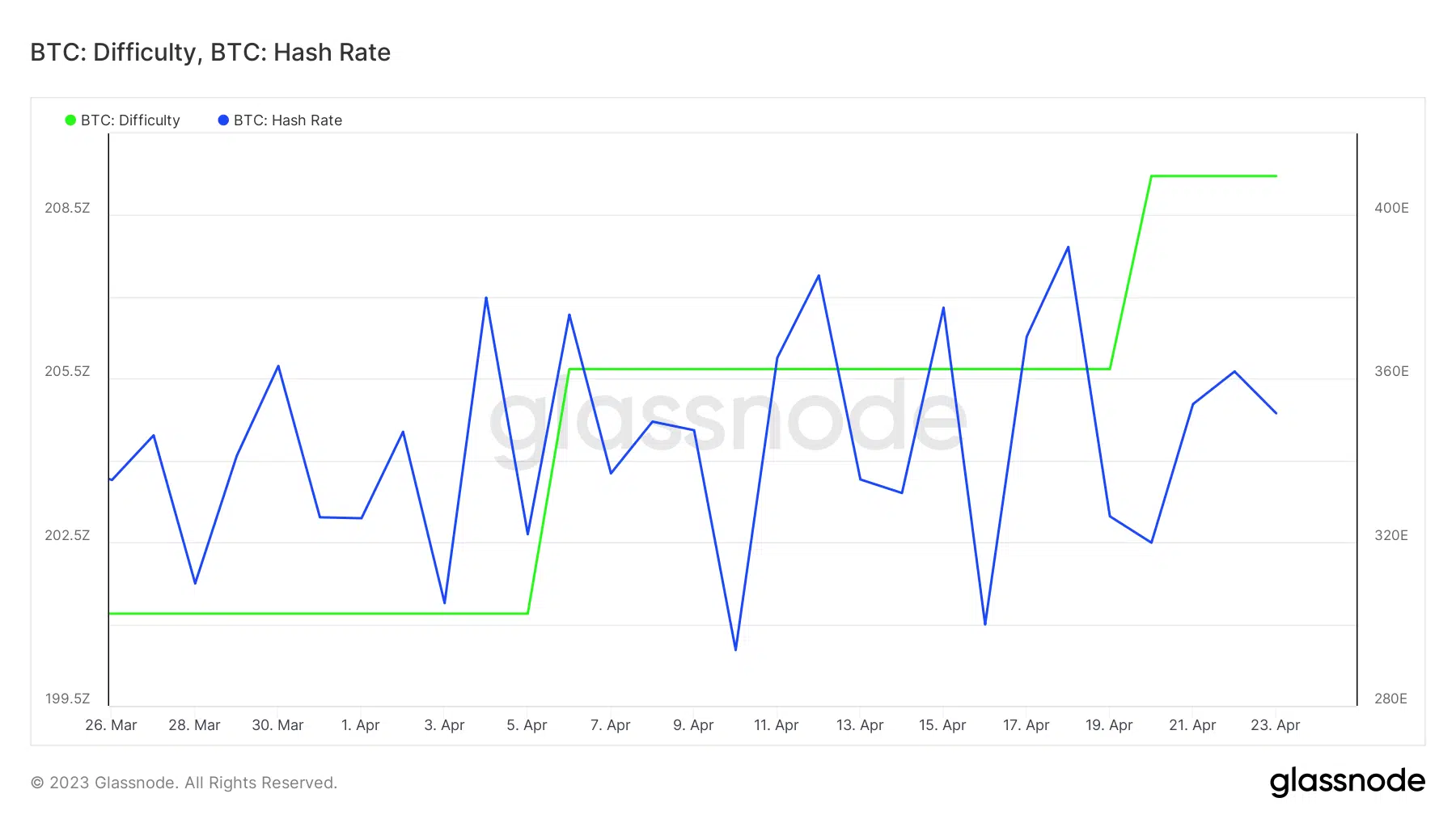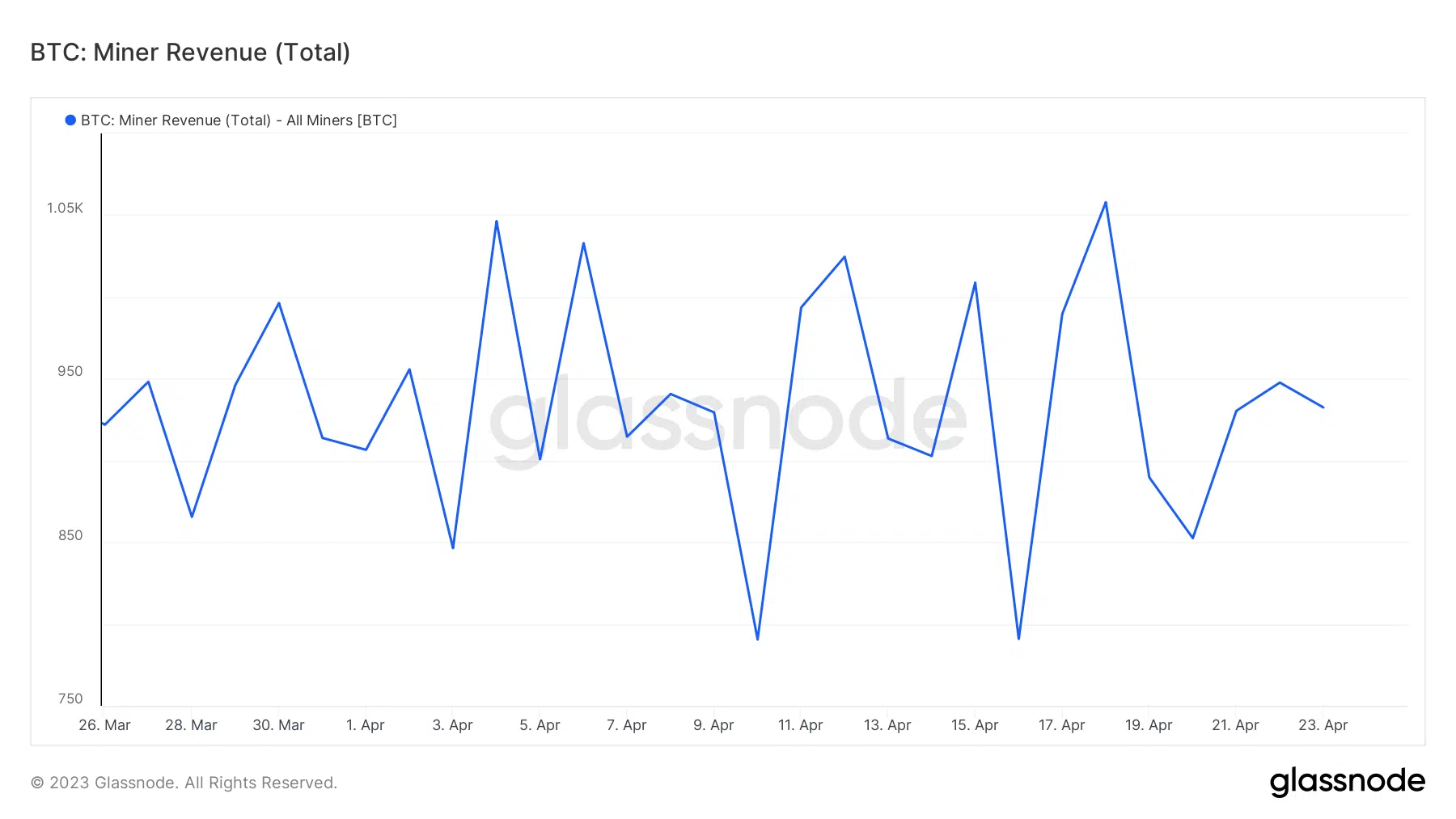Assessing the state of BTC mining and miners based on these major changes

- A drop in electricity prices may lead to lower BTC mining costs for miners.
- However, BTC’s hashrate fell considerably as of 18 April.
Bitcoin [BTC] mining has had its fair share of challenges in recent times. Operating costs are the biggest of challenges, especially with the surging energy prices due to high demand during winter.
So, how is the Bitcoin mining industry fairing?
Is your portfolio green? Check out the Bitcoin Profit Calculator
Electricity prices are expected to drop due to lower demand as Europe and the U.S. shift from winter. Most miners are concentrated in these regions and a drop in electricity demand may translate to lower miner operating costs.
In addition, the World Economic Forum (WEF) recently praised Bitcoin mining as one of the avenues for reducing emissions.
₿???????: World Economic Forum says #bitcoin mining can reduce a "massive amount of emissions" and benefit the environment.pic.twitter.com/QF53CcAO9K
— Documenting ₿itcoin ? (@DocumentingBTC) April 23, 2023
The WEF has reportedly championed Bitcoin mining because modular mining operations can be powered using electricity harnessed through methane. While this is good news, miners may not be out of the woods. This was because of the latest difficulty adjustment. Some of the effects of this adjustment may already be evident.
Tech giant Intel recently announced that it will no longer produce Blockscale ASICs. The timing of the announcement aligns with the difficulty adjustment. This may suggest that the higher difficulty may have affected the Blockscale ASICs’ profitability.
There has been speculation that the higher difficulty may have been the reason for Intel’s decision.
Assessing the impact of the higher Bitcoin mining difficulty
Some of Bitcoin’s metrics highlighted a clear short-term impact of the recent difficulty adjustment. A good example is the drop in Bitcoin’s hash rate which fell by a notable margin since 18 April.
One of the most probable reasons for the hash rate decline could be that many miners opted to shut down operations. Such a reaction is common particularly when some Bitcoin miners fail to break even.
They are forced to shut down their operations rather than continue with their operations while making losses. As a result, miners exiting the market could lead to a hash rate drop.
How many are 1,10,100 BTCs worth today
Bitcoin miner revenue has had its fair share of ups and downs in the last 30 days. However, it fell on 18 April just like the hash rate, indicating that it may have been affected by the difficulty adjustment.
Miner revenue should bounce back in theory once the market makes its adjustments with the remaining miners. Also, the miner revenue is determined by more factors besides difficulty. The bearish market conditions and lower trading activity/transactions likely contributed to less revenue.








